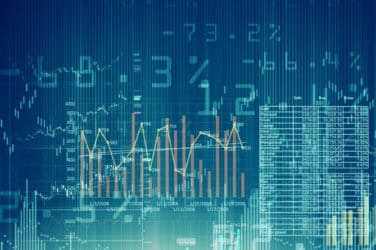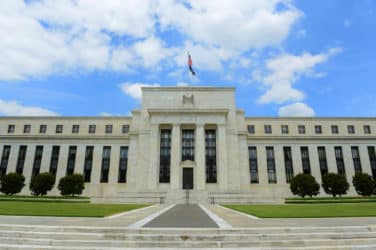
Excerpts from the letter:
Music plays a big role in my life. As a kid growing up in California, I used to go to the local record shop, buy a piece of vinyl and listen to the album on my record player. I still listen to records, though less often than when I was young. Today, streaming allows me to listen with ease to the whole album of an artist, or just that artist’s greatest hits, or a playlist of my own compilations, or those of other listeners. We have so much choice at our fingertips.
Technology has also made financial markets much more affordable and accessible. Forty years ago, buying a stock or bond was a laborious process that required calling a stockbroker. The fees investors paid weren’t always clear. Now anyone with a smartphone and a brokerage account has tens of thousands of ETFs, mutual funds, and single stocks at their fingertips, and can make a purchase with a few clicks. Technology has greatly expanded the amount of choice for savers and investors. It can’t eliminate risks from investing (as we’ve seen all too vividly this past week), but technology has made financial markets more transparent, as well as easier and cheaper to access.
Larry Fink sees “An Economy of Fragmentation” after the repeated shocks of the past few years. He expects #inflation to be closer to 3.5% or 4% in the next few years. Learn more in his annual Chairman’s Letter to Investors: https://t.co/1Hmo4jvLlO pic.twitter.com/ongNtgtIX2
— BlackRock (@BlackRock) March 15, 2023
The price of easy money – are the dominoes starting to fall?
Since the financial crisis of 2008, markets were defined by extraordinarily aggressive fiscal and monetary policy. As a result of these policies, we’ve seen inflation move sharply higher to levels not seen since the 1980s. To fight this inflation, the Federal Reserve in the past year has raised rates nearly 500 basis points. This is one price we’re already paying for years of easy money – and was the first domino to drop.
Bond markets were down 15% last year, but it still seemed, as they say in those old Western movies, “quiet, too quiet.” Something else had to give as the fastest pace of rate hikes since the 1980s exposed cracks in the financial system.
This past week we saw the biggest bank failure in more than 15 years as federal regulators seized Silicon Valley Bank. This is a classic asset-liability mismatch. Two smaller banks failed in the past week as well. It’s too early to know how widespread the damage is. The regulatory response has so far been swift, and decisive actions have helped stave off contagion risks. But markets remain on edge. Will asset-liability mismatches be the second domino to fall?
Prior tightening cycles have often led to spectacular financial flameouts – whether it was the Savings and Loan Crisis that unfolded throughout the eighties and early nineties or the bankruptcy of Orange County, California, in 1994. In the case of the S&L Crisis, it was a “slow rolling crisis” – one that just kept going. It ultimately lasted about a decade and more than a thousand thrifts went under.
We don’t know yet whether the consequences of easy money and regulatory changes will cascade throughout the U.S. regional banking sector (akin to the S&L Crisis) with more seizures and shutdowns coming.
It does seem inevitable that some banks will now need to pull back on lending to shore up their balance sheets, and we’re likely to see stricter capital standards for banks.Over the longer term, today’s banking crisis will place greater importance on the role of capital markets. As banks potentially become more constrained in their lending, or as their clients awaken to these asset-liability mismatches, I anticipate they will likely turn in greater numbers to the capital markets for financing. And I imagine many corporate treasurers are thinking today about having their bank deposits swept nightly to reduce even overnight counterparty risk.
And, there could yet be a third domino to fall. In addition to duration mismatches, we may now also see liquidity mismatches. Years of lower rates had the effect of driving some asset owners to increase their commitments to illiquid investments – trading lower liquidity for higher returns. There’s a risk now of a liquidity mismatch for these asset owners, especially those with leveraged portfolios.
As inflation remains elevated, the Federal Reserve will stay focused on fighting inflation and continue to raise rates. While the financial system is clearly stronger than it was in 2008, the monetary and fiscal tools available to policymakers and regulators to address the current crisis are limited, especially with a divided government in the United States.With higher interest rates, governments can’t sustain recent levels of fiscal spending and the deficits of previous decades, the U.S. government spent a record $213 billion on interest payments on its debt in the fourth quarter of 2022, up $63 billion from a year earlier.
In the U.K., as gilts plunged last fall following the announcement of significant unfunded tax cuts, we saw how swiftly markets react when investors lose faith in their government’s fiscal discipline.After years of global growth being driven by record high government spending and record low rates.
The world now needs the private sector to grow economies and elevate the living standards of people around the globe. We need leaders in both government and corporations to recognize this imperative and work together to unleash the potential of the private sector.
An economy of fragmentation
These dramatic changes in financial markets are happening at the same time as equally dramatic changes in the landscape of the global economy – all of which will keep inflation elevated for longer.
I wrote in last year’s letter to shareholders about the profound shifts in globalization that we would see in 2022 as a result of Russia’s invasion of Ukraine. The seeds of a backlash against globalization were planted long before this war in Europe.
In 2017, I highlighted how globalization and technological change were dividing communities and impacting workers. The societal implications included Brexit, upheaval in the Middle East, and political polarization in the U.S.Covid isolation has heightened this charged environment and led to greater protectionism and polarization. The lack of face-to-face interaction has had a profound effect on humanity. Video calls are no substitute for meeting in person or sharing a meal. The ability to connect has never been more important, whether you are the manager of a dozen people, the CEO of a multinational corporation or the leader of a global superpower wrestling with the new geopolitical landscape.
Employees want to connect with their companies and citizens want to believe in their governments, but polarization and fragmentation have eroded trust and diminished hope.The repeated shocks of the past few years have also dramatically reshaped supply chains. The pandemic highlighted the need for supply chains to be resilient. Russia’s invasion of Ukraine and growing geopolitical tensions have brought national and economic security front and center.
Whether it is for food and energy or computer chips and AI, companies and countries are all looking to ensure they are not dependent on supply chains exposed to geopolitical tensions. Increasingly, they want to source essential goods close to home even if it means higher prices. These shifts are producing a less integrated, more fragmented global economy. Leaders in public and private sectors are essentially trading off efficiency and lower costs for resilience and national security. It is understandable public policy. But for investors it is important to recognize the risks and opportunities it creates.
Governments are playing a bigger role in where products can be sourced and where capital should be allocated as they look to keep the production of critical components inside their borders. This means capital won’t necessarily be allocated to the businesses that deliver the maximum market return regardless of where they are located.
This may produce better national security outcomes with more resilient and secure supply chains. But in the near term, the effects are highly inflationary. This tradeoff between price and security is one of the reasons I believe inflation will persist and be more difficult for central bankers to tame over the long term. As a result, I believe inflation is more likely to stay closer to 3.5% or 4% in the next few years.
This new economy of fragmentation brings risks – like elevated inflation – but also opportunities.I believe that North America could be one of the biggest global beneficiaries. We have a large and diverse labor force. We have abundant natural resources, with the potential for both energy and food security. Public policy is helping to keep chip manufacturing in the U.S., and the latest innovations in AI have become a new preoccupation. Other national winners will emerge as well.
“Leaders in public and private sectors are essentially trading off efficiency and lower costs for resilience and national security… This trade-off between price and security is one of the reasons I believe inflation will persist and be more difficult for central bankers to tame over the long term.”
Helping clients navigate and invest in the global energy transition
Investing for the long term requires taking a long-term view of what will impact returns, including demographics, government policy, technological advancements, and the transition to a low carbon economy. In the near term, monetary and fiscal policy will be the major driver of returns. Over the long run, investors also need to consider how the energy transition, among other factors, will impact the economy, asset prices, and investment performance.
For years now, we have viewed climate risk as an investment risk. That’s still the case. Anyone can see the impact of climate change in the natural disasters in California or Florida, in Pakistan, across Europe and Australia, and in many other places around the world. There’s more flooding, more wildfires, and more intense storms. In fact, it’s hard to find a part of our ecology – or our economy – that’s not affected. Finance is not immune to these changes. We’re already seeing rising insurance costs in response to shifting weather patterns.
According to Munich Re, insurers had to cover $120 billion for natural catastrophes in 2022,9 – a once unthinkable figure. This drives up insurance prices and will have a huge impact on homeowners, some of whose homes may simply become unaffordable to insure.
The U.S. housing market could see significant changes if people relocate to areas less affected by changing weather patterns. To prevent an exodus from coastal zones and areas affected by drought and wildfires, some governments have been subsidizing or replacing private insurance. Most flood insurance policies currently providing coverage in Florida are underwritten by the federal government’s National Flood Insurance Program (NFIP). The NFIP has had to borrow funds from the U.S. Treasury and is currently $20.5 billion in debt.10The transition to a low-carbon economy is top of mind for many of our clients. Our clients have a range of investment objectives and perspectives. We have clients who want to invest in ways that seek to align with a particular transition path or to accelerate that transition. We have clients who choose not to. We offer choice to help clients reach their investment goals, and we manage their assets consistent with their objectives and guidelines.
Changes to government policy, technology, and consumer preferences will create significant investment opportunities. Some of our clients want to take advantage of opportunities created in areas like infrastructure investments that will benefit both households and economies.
Many of our clients also want access to data to ensure that material sustainability risk factors that could impact long-term asset returns are incorporated into their investment decisions. This is why we partner with other companies and provide insights into how a changing climate and the transition may affect portfolios over the long term. These clients track the transition to lower carbon emissions just as they track any other driver of investment risk. They want our help to understand the likely future paths of carbon emissions, how government policy will impact these paths, and what that means in terms of investment risks and opportunities.
It is not the role of an asset manager like BlackRock to engineer a particular outcome in the economy, and we don’t know the ultimate path and timing of the transition. Government policy, technological innovation, and consumer preferences will ultimately determine the pace and scale of decarbonization. Our job is to think through and model different scenarios to understand implications for our clients’ portfolios.
That’s why BlackRock has been so vocal in recent years in advocating for disclosures and asking questions about how companies plan to navigate the energy transition. As minority shareholders, it’s not our place to be telling companies what to do. My letters to CEOs are written with a single goal: to ensure companies are going to generate durable, long-term investment returns for our clients.
At BlackRock we use data and analytics to help our clients understand how the energy transition is evolving and give them choices about how they would like to invest in emerging opportunities. Better data is essential. More than half of the companies in the S&P 500 now voluntarily report Scope 1 and Scope 2 emissions. I expect that number will continue to rise.11
But as I have said consistently over many years now, it is for governments to make policy and enact legislation, and not for companies, including asset managers, to be the environmental police.Transition toward lower carbon emissions will reflect the regulatory and legislative choices governments make to balance the need for secure, reliable and affordable energy with orderly decarbonization.
We know that the transition will not be a straight line. Different countries and industries will move at different speeds, and oil and gas will play a vital role in meeting global energy demands through that journey. Many of our clients see the investment opportunities that will come as established energy companies adapt their businesses. They recognize the vital role energy companies will play in ensuring energy security and a successful energy transition.
We are working with energy companies globally that are essential in meeting societies’ energy needs. To ensure the continuity of affordable energy prices during the transition, fossil fuels like natural gas, with steps taken to mitigate methane emissions, will remain important sources of energy for many years ahead. BlackRock is also investing, on behalf of our clients, in responsibly-managed natural gas pipelines.
For example, in the Middle East, we invested in one of the largest pipelines for natural gas, which will help the region utilize less oil for power production.Governments are taking bigger steps to drive a transition toward lower carbon emissions. For example, we see the Inflation Reduction Act in the U.S. creating significant opportunities for investors to allocate capital to the energy transition. This legislation commits an estimated $369 billion for investment in energy security and climate change mitigation. This is attracting investment into existing and emerging technologies like carbon capture and green hydrogen. We are creating opportunities for clients to participate in infrastructure and technology projects, including the building of carbon capture storage pipelines and technology that turns waste into clean burning natural gas.12
European governments are also developing incentives to support the transition to a net zero economy and drive growth.Some of the most attractive investment opportunities in the years ahead will be in the transition finance space. Given its importance to our clients, BlackRock’s ambition is to be the leading investor in these opportunities on their behalf.I wrote last year that the next 1,000 unicorns won’t be search engines or social media companies. Many of them will be sustainable, scalable innovators – startups that help the world decarbonize and make the energy transition affordable for all consumers. I still believe that. For clients who choose, we’re connecting them with these investment opportunities.
Our approach to investing in the transition is the same as our approach across our platform: we provide choice to our clients; we seek the best risk-adjusted returns within the mandate they give us; and we underpin our work with research, data, and analytics.
Digital assets
If there’s one part of financial services that’s caught the headlines over the past year, it’s digital assets, not least due to the collapse of FTX. But beyond the headlines – and the media’s obsession with Bitcoin – very interesting developments are happening in the digital asset space.
In many emerging markets – like India, Brazil and parts of Africa – we are witnessing dramatic advances in digital payments, bringing down costs and advancing financial inclusion. By contrast, many developed markets, including the U.S., are lagging behind in innovation, leaving the cost of payments much higher.
For the asset management industry, we believe the operational potential of some of the underlying technologies in the digital assets space could have exciting applications. In particular, the tokenization of asset classes offers the prospect of driving efficiencies in capital markets, shortening value chains, and improving cost and access for investors. At BlackRock we continue to explore the digital assets ecosystem, especially areas most relevant to our clients such as permissioned blockchains and tokenization of stocks and bonds.While the industry is maturing, there are clearly elevated risks and a need for regulation in this market. BlackRock is committed to operational excellence, and we plan to apply the same standards and controls to digital assets that we do across our business.
Looking ahead
Writing this letter is always an opportunity to reflect on the past year and think about what the future might bring. When I wrote last year, Russia had just invaded Ukraine, globalization was shifting, inflation was rising and interest rates were about to move sharply higher. The world is still grappling with many of these changes and the market volatility that comes with them. I am so proud of how our leadership team guided our firm, delivered for our clients, created value for our shareholders, and gave back to our communities.
My deep belief in the power of the capital markets and the importance of being invested in them is as strong as it was when we founded BlackRock 35 years ago. I know that belief is firmly held by my colleagues at BlackRock across all parts of the organization. Their commitment to living our purpose, evolving ahead of clients’ needs, and making access to the capital markets easier and more affordable for people around the world make me incredibly optimistic for the future.
I’ve changed how I listen to music, but I return to some tracks again and again. The same is true when it comes to themes I advocate for on behalf of our clients. I use my voice to advocate for BlackRock’s clients, to encourage people to invest with a long-term perspective and to speak out about risks and opportunities that investors need to navigate.
Since BlackRock’s founding, we have always been unwavering in our commitment to serving our clients, and by doing so, we have delivered outsized returns for our shareholders.
Chairman and Chief Executive Officer
The full letter can be read here






